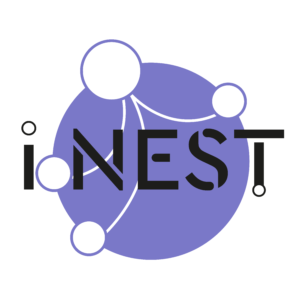
Digital Twins applications presented by Spoke 9 researchers at iNE(S)T-working
Yesterday, 15th February 2024, the University Teaching Hub in Vicenza hosted the networking meeting iNE(S)T-working. During a parallel session, Spoke 9 researchers showcased the most crucial applications of Digital Twins
Vicenza, 16th February 2024
«The digital world is the unifying thread among the diverse vocations of universities within iNEST»: these were the opening words by Prof. Mara Thiene from the University of Padua as she welcomed over 300 researchers involved yesterday into iNE(S)T-working—a networking meeting for all iNEST leaders and recruits. The research activities of Spoke 9 constitute a pivotal element within the overarching vision of digitalization upheld by iNEST: Digital Twins (DTs) emerge as drivers of innovation in many sectors, as evidenced during a parallel session of iNE(S)T-working, which also showcased insights from Spokes 1 and 8. Introduced by the Spoke 9 Leader for SISSA, Prof. Gianluigi Rozza, three Spoke 9 researchers captivated attendees by showcasing various applications of DTs.
Niccolò Tonicello from SISSA was the first to speak; he discussed the diverse applications of DTs in the aviation field. «Digital Twins are capable of managing very complex phenomena, such as turbulence» stated Tonicello. DTs also enable the management of issues like ice formation on wings and the reproduction of combustion processes. To do so, Tonicello is working on integrating data-driven and AI-based modeling techniques like Physics-Informed Neural Networks (PINNs), which enable machines to solve equations autonomously. Furthermore, he discussed ongoing efforts to combine information from various Reduced Order Models (ROMs) to develop an optimal model. All these efforts are dedicated to enhance aircraft performance, but they also pave the way for safer and more efficient air travel, marking a significant leap forward in aerospace engineering.
The next presentation was delivered by Pasquale Claudio Africa from SISSA and was focused on the application of DTs to the cardiovascular apparatus—a field of remarkable impact on society and the local community: «Cardiovascular diseases remain the leading cause of death and hospitalization», as Africa highlighted, «and applied mathematics can play a key role in studying them». He collaborates with clinical partners to get images from CT scans and MRIs, to create simulations of the fluid dynamics of blood. Africa pointed out the difference between two modeling techniques, Full Order Models (FOMs) and ROMs, explaining that the second ones capture essential physics more efficiently and in real-time. This is crucial to integrate Digital Twins into the field of medicine, offering unprecedented insights and advancements that could potentially redefine the landscape of procedures like coronary bypasses, ultimately enhancing patient outcomes and saving lives.
Finally, Erica Salvato from the University of Trieste showcased her research, aimed at developing DTs for real-time simulation. «Compared to a regular simulator, a DT enables a seamless and automatic data flow from and to the real system, allowing to monitor, analyze, and optimize a process in real-time: this opens the door toward developments in the industrial field», explained Salvato. Key areas of focus include predictive maintenance and autonomous control of dynamic systems. Her work has a particular emphasis on decision-making processes and she acknowledges the challenge posed by the so-called “reality gap,” wherein controllers developed on simulators may encounter variations when applied to real systems. Salvato’s involvement extends to the development of DTs in drone arenas—specially designed controlled environments for testing and developing drones and associated technologies—showcasing her interdisciplinary approach to technological advancement.
All these profound insights into the transformative power of Digital Twins echoed the collaborative and innovative spirit that defines the iNEST community. «This project provides an opportunity to consolidate existing ties and forge new ones», stated Prof. Angelo Montanari, Director of iNEST Scientific Committee, «We still have a lot to do and this meeting is a fundamental step.» The journey of the iNEST Consortium toward technological advancement and societal impact has only just begun. With Digital Twins as their guiding light, the pioneering minds of Spoke 9 are poised to chart a course toward a future where innovation knows no bounds.
Click here to see the photo gallery of the event.

